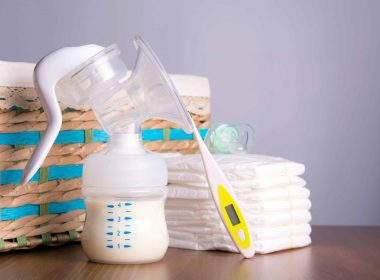Breastfeeding: The First Hour
You have probably attended the antenatal classes, read the books and contacted the support groups locally. You are off to a really good start but do you know what to expect straight off?
Skin To Skin Should Be A Priority
Immediately after birth (as long as mother and baby are well) baby should be placed straight up on to moms chest , skin to skin and left there for minimum of an hour. A hat is placed on babys head and a blanket to snuggle baby up is all that’s needed. During the ‘Golden hour’ baby will have unrestricted access to the breast and it is during this time that baby will have their first feed.
Skin to Skin has many proven benefits for baby, it regulates the heart rate, stabilizes blood sugars, helps regulate temperature & respiratory rate. It cannot be over rated!
Skin to Skin in Practice
Where possible all procedures should be delayed but if necessary then try keep baby skin to skin on moms chest. This is particularly appropriate if mom is in theatre having a Cesarean Section. Skin to skin can still be done if conditions allow.
Feeding in the first hour has been proven to have more positive outcome for exclusive breastfeeding . It also reduced the risk post-partum hemorrhage by increasing the contractility of the uterus while also promoting the bond between mother & baby.
Follow Babies Cues
The first 24 hours you may find baby sleepy and disinterested in the breast. Its ok-being born is a tough job! Trust me, baby will wake up and let you know it. Feed on demand is always what we recommend. It’s important to watch for early feeding cues but if baby doesn’t display them then leave no longer than 3 hours from the start of 1 feed until the next. Wake them, strip them down to nappy, change their nappy to stimulate if needed. 3 hours is not a goal to get baby to last to but the longest they can be left before a feed is due.
Early breastfeeding cues
- Mouthing/Lip smacking
- Opening the mouth
- Stretching
- Rooting
- Hands to mouth
Crying is a late feeding cue
It is very difficult to latch a crying ,upset baby. Generally, parents have missed the early feeding cues displayed by baby before they have reached this point. Its best to calm baby first, try skin to sin, soothe baby. Then try again. Don’t Panic!
Colostrum: Liquid Gold
Colostrum is you first milk you produce for your newborn. Its in small quantities so baby can learn to suck, swallow & breathe all at once. It is full of all the nutrients your baby needs to grow and thrive. Remember , in the first day of life Baby only need 5-7ml of breast milk in a feeding session. If baby is too sleepy to feed or unsettled then why not try hand express. It’s a great way to give a little extra to your baby to help settle them and also helps build your milk supply and encourage your transitional milk to come in faster.
Feed Early And Often
The more you feed your baby, the more stimulation of the breasts. Breastfeeding works on the law of supply & demand. The more demand at the breast causes an increase in supply. So in essence to make milk you need to take milk! By breastfeeding frequently you are laying down the foundations to building a healthy and abundant milk supply. Think of it as every missed feeding session is a missed opportunity to build up your supply!!
Second Night Syndrome
Oh the first 24hrs baby fed and slept. Your winning- right!!… you think to yourself ‘I’ve got this !’ When all of a sudden your little person wakes up and wants to be heard. He feeds non stop and suddenly refuses to be put back in the bassinette. You question yourself, your supply ‘I don’t have enough milk or ‘is my baby is starving’. Well let me tell you that research now indicates that babies react this way as they are overwhelmed by their new environment. Imagine it, how would you feel if you were cocooned in a love warm, quiet place where all you heard were muffled sounds and your mothers heartbeat, then all of a sudden you are in a loud, bright chaotic environment . This is normal, prepare for it. ‘It too shall pass’
The Latch
Ensure good latch at each feeding session. Ask yourself 2 questions? Is it painful & is baby transferring milk. If every health care professional tells you the latch looks great but you are in pain, dreading the next feed, then you have an issue. It is normal if you may experience some discomfort for the first 20 seconds but after that it eases. Pain is not a rite of passage for feeding.
Ensure baby is tummy to tummy with Mummy. Bring babys chin to breast first, then nipple to nose (sniffing position). Wait for wide mouth and then bring baby onto breast.
The early days are tough, take each feed as it comes, if in doubt or need help contact a Lactation consultant. I am always here to help www.nursingmama.ie







